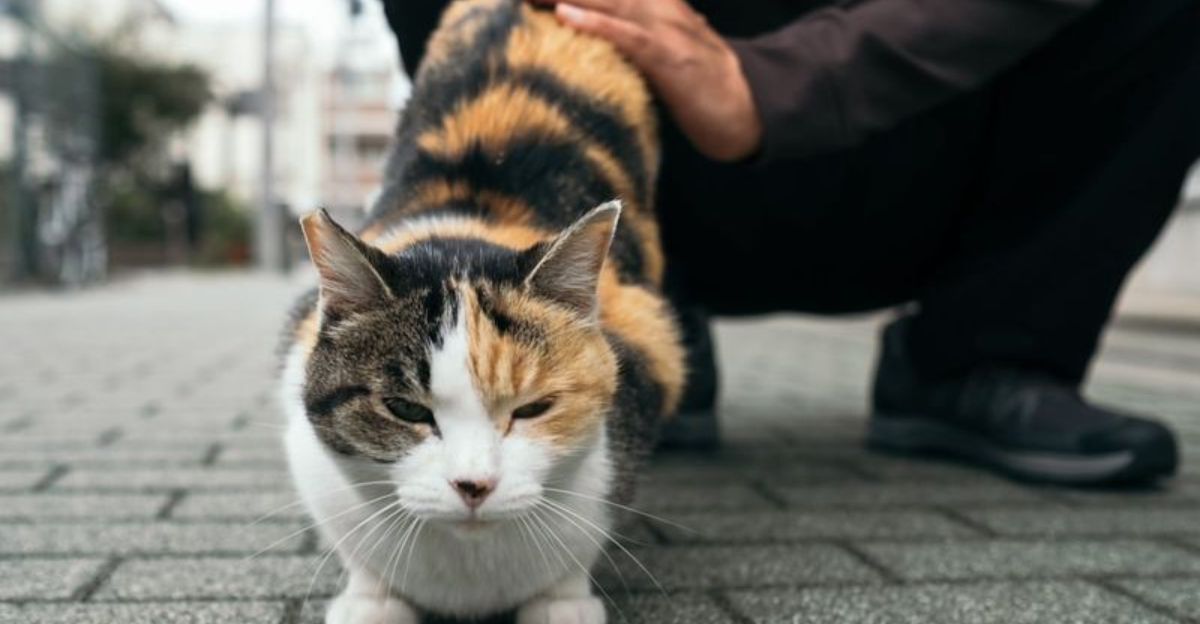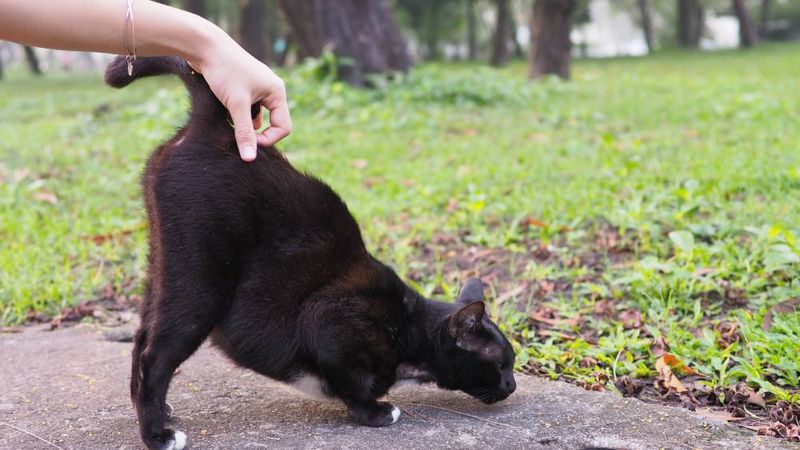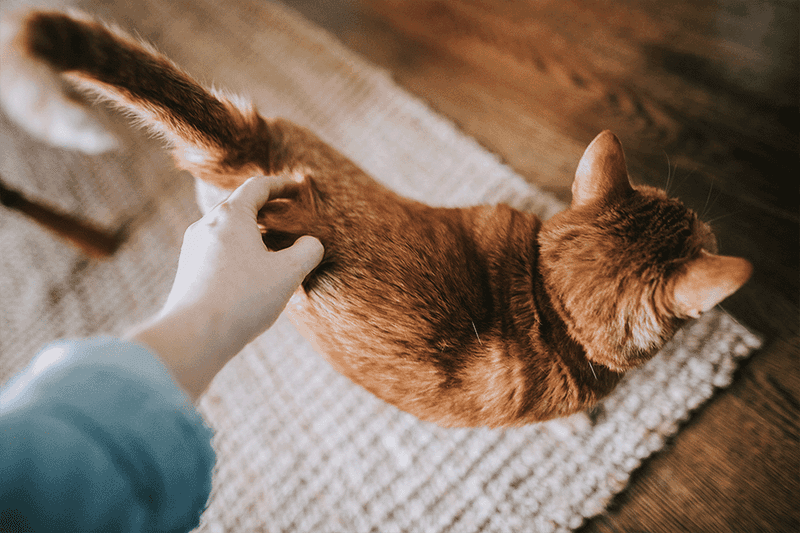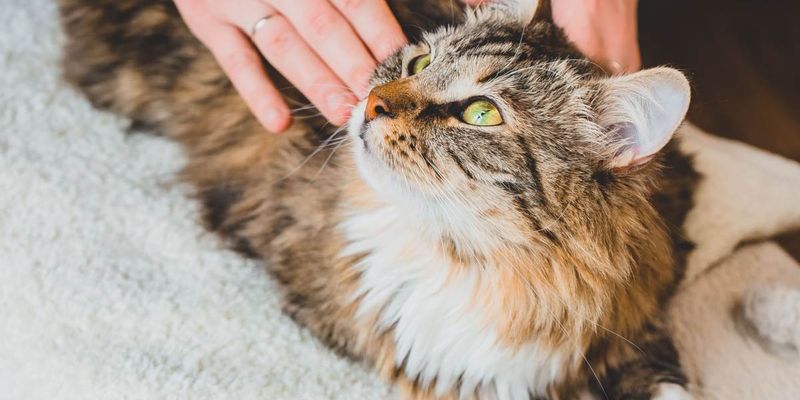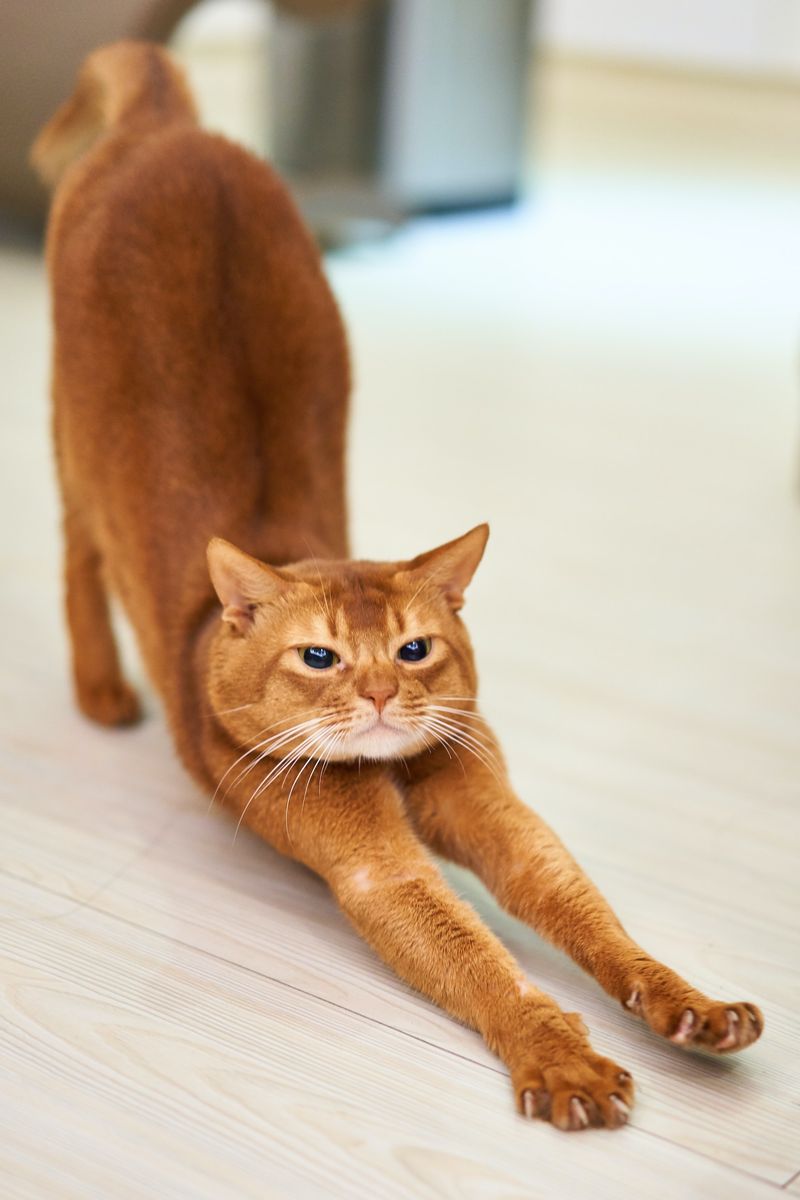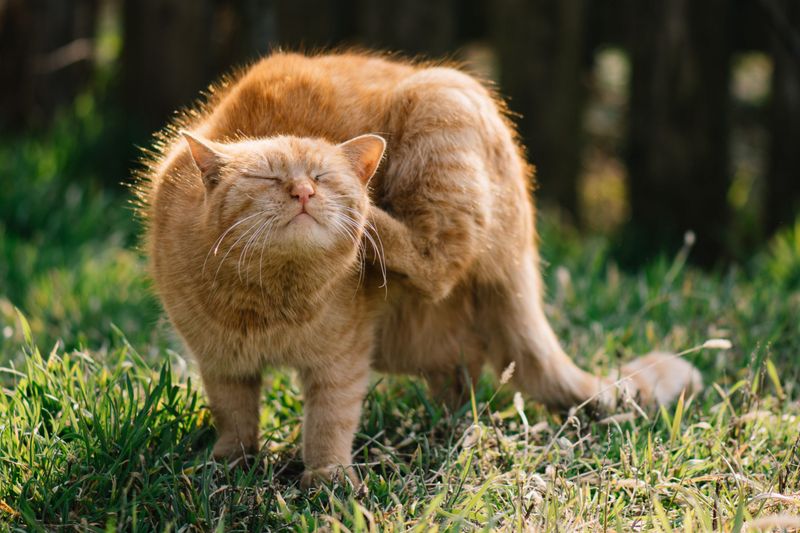📖 Table of Content:
- 1. Instinctual Reflex From Kittenhood
- 2. They’re Marking You With Scent Glands
- 3. It Feels Pleasurable or Ticklish
- 4. They’re Showing Trust and Submission
- 5. It Signals Mating-Related Reflexes
- 6. It’s a Learned Response From Positive Reinforcement
- 7. They’re Simply Asking for More
- 8. There Could Be an Underlying Skin Sensitivity or Issue
If you’ve ever scratched a cat near the base of its tail and watched it lift its rear into the air, you’re not alone in wondering what’s going on. This seemingly odd behavior often catches people off guard, especially new cat owners who aren’t yet fluent in feline body language. While it may appear comical, there’s actually a lot going on beneath that raised tail—both behaviorally and biologically.
Cats use their bodies to communicate far more than they use vocalizations. From tail flicks to ear twitches, every movement carries a potential message. The act of lifting the hindquarters during petting is one such gesture—part reflex, part communication, and part sensory experience. Depending on the cat and the context, it can mean anything from trust to territorial marking to instinctual memories from kittenhood. Understanding the reasons behind this behavior can improve your relationship with your cat and help you meet their emotional and physical needs.
This article explores eight possible explanations for why cats raise their butts when scratched. Some are purely rooted in biology, while others stem from emotion, learned experiences, or even evolutionary behaviors. By learning to interpret this common but often misunderstood motion, you’ll gain deeper insight into your cat’s world—and maybe even strengthen the bond you share.
1. Instinctual Reflex From Kittenhood
That adorable butt-lift has roots deep in your cat’s earliest memories. When mama cats groom their babies, kittens automatically raise their hindquarters to help mom clean those hard-to-reach areas. This reflex becomes hardwired into their developing brains. Even as your cat grows into adulthood, that same neurological pathway activates when you scratch near their tail base, triggering that familiar pose. Your adult cat’s butt-raising response is essentially a heartwarming throwback to their kittenhood – a reminder that part of them still remembers those nurturing moments with their mother, even years later.
2. They’re Marking You With Scent Glands
Your feline companion isn’t just enjoying a scratch – they’re secretly claiming you! Cats possess special scent glands located right at the base of their tail, packed with unique pheromones that carry their personal signature. By elevating their rear during scratches, they’re strategically positioning these glands to transfer their scent onto you. Consider it a compliment of the highest order in cat language. This scent-marking ritual isn’t random – it’s a deliberate bonding behavior that broadcasts to other animals that you belong to them. Your cat is essentially walking around with invisible “Property of Fluffy” stamps all over you!
3. It Feels Pleasurable or Ticklish
The base of your cat’s tail is like their personal pleasure zone – packed with sensitive nerve endings that light up with delight when touched just right. When you hit this sweet spot, the sensation can be downright euphoric for your furry friend. Some cats experience a tingling wave of pleasure similar to what humans might feel during a particularly good back scratch. Their elevated rear is simply their body’s natural response to maximize this pleasurable feeling. Watch for other signs of enjoyment like purring, kneading, or that blissful half-closed eye expression. Together with the butt raise, these signals form your cat’s unique language of contentment.
4. They’re Showing Trust and Submission
When your cat presents their posterior skyward, they’re displaying a profound level of trust. In the wild, exposing vulnerable areas puts cats at risk, so this position represents their complete comfort with you. Feline friends typically greet each other by sniffing rear ends – it’s their version of a handshake. By lifting their hindquarters, your cat is essentially offering the feline equivalent of an open-armed welcome. This submissive posture communicates that they recognize you as a safe companion and respected member of their social circle. Your cat is saying, “I trust you enough to be vulnerable around you” – perhaps the highest compliment in cat language!
5. It Signals Mating-Related Reflexes
Female cats in heat showcase a distinctive posture called lordosis – arching their backs dramatically while raising their hindquarters. This instinctive position signals reproductive readiness to potential mates. Even spayed or neutered cats retain shadows of these hardwired mating reflexes. The neural pathways responsible for this positioning remain intact after sterilization, though typically with less intensity. Male cats may display similar behaviors despite never having mated. These ancient biological responses are deeply embedded in feline DNA, persisting regardless of reproductive status – just like how humans still get goosebumps even though we no longer need raised hair for warmth or intimidation.
6. It’s a Learned Response From Positive Reinforcement
Cats are masters of pattern recognition. Remember the first time your kitty experienced that magical butt scratch? Their brain immediately filed that sensation under “extremely pleasant experiences.” Through classic conditioning worthy of Pavlov himself, your cat learned that elevating their rear end leads to more of those delightful scratches. The connection strengthens with each satisfying interaction until it becomes almost automatic. Some clever cats even initiate the behavior before you touch them – backing up with tail raised high, essentially saying, “Hey human, you know the drill!” It’s their way of training you to deliver those sweet, sweet scratches on demand.
7. They’re Simply Asking for More
Your cat’s elevated rear end speaks volumes in feline body language. Think of it as their version of a thumbs-up combined with an enthusiastic “Don’t stop now!” Cats are notoriously particular about where and how they enjoy being touched. When they find that perfect scratching spot – often at the tail base – they’ll position themselves to maximize the sensation, using their body as a directional guide. Some especially expressive felines will even wiggle their raised hindquarters or do the “elevator butt” move, gradually lifting higher in response to your touch. This unmistakable body language is your cat’s way of communicating exactly what they want from their personal massage therapist – you!
8. There Could Be an Underlying Skin Sensitivity or Issue
While usually harmless, an overly enthusiastic butt-raising reaction might occasionally signal something beyond simple pleasure. Cats with flea allergies or skin irritations may have heightened sensitivity around their tail base, causing exaggerated responses to touch. Watch for concerning signs like excessive licking, hair loss, or skin redness in that area. If your normally calm cat suddenly becomes dramatic about rear-end scratches, or seems uncomfortable rather than pleased, something might be amiss. Most cases are perfectly normal expressions of feline enjoyment, but staying alert to changes in your cat’s typical butt-raising behavior could help catch potential health issues early. When in doubt, a quick vet check can provide peace of mind.
